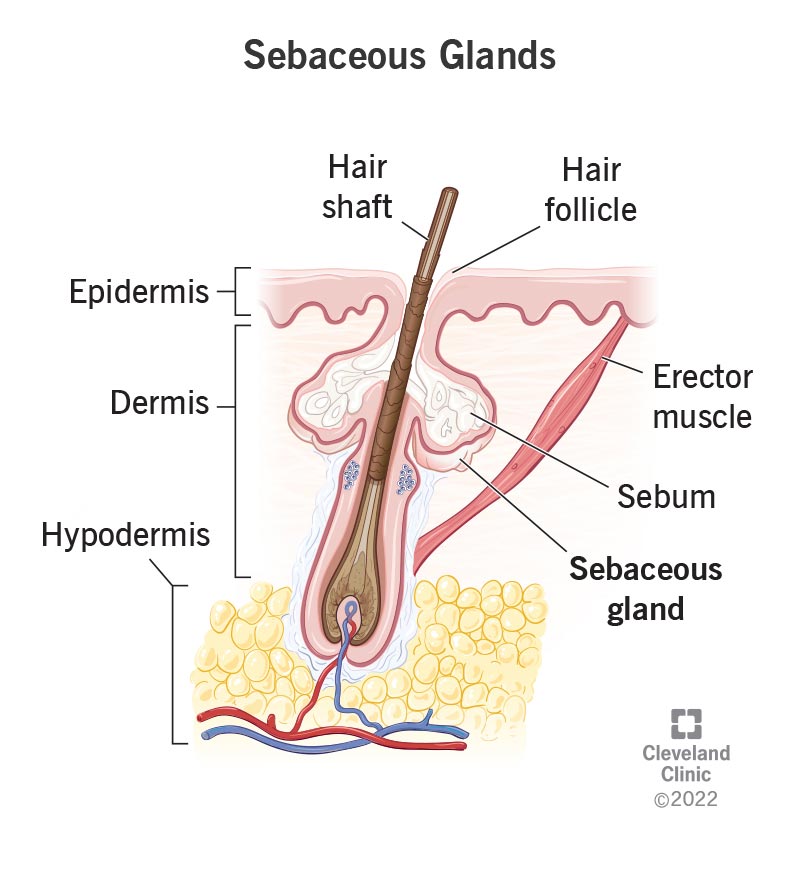The human skin, our body’s largest organ, is a complex and dynamic ecosystem, home to a diverse array of cells, structures, and glands. Among these vital components, sudoriferous glands and sebaceous glands play crucial roles in maintaining skin health and regulating body temperature. While both glands contribute to skin health, they exhibit distinct functions and mechanisms, working in harmony to protect and nourish our skin. Embark on a dermatological journey as we delve into the world of sudoriferous and sebaceous glands, uncovering their unique characteristics and empowering you to understand the intricacies of skin biology.
Sudoriferous Glands: The Masters of Sweating
Sudoriferous glands, often referred to as sweat glands, are the skin’s primary mechanism for thermoregulation, the process of maintaining a stable body temperature. These glands are distributed throughout the body, with the highest concentration found on the palms, soles, forehead, and armpits. Sudoriferous glands are classified into two main types:
Eccrine glands: The most abundant type of sweat gland, eccrine glands are responsible for producing clear, watery sweat that helps cool the body when we overheat.
Apocrine glands: Primarily found in areas with hair follicles, apocrine glands produce a thicker, milky sweat that contains proteins and lipids. Apocrine glands become more active during puberty and are associated with body odor.
Sebaceous Glands: The Oily Guardians of Skin
Sebaceous glands, the skin’s oil-producing glands, are essential for maintaining skin hydration, lubrication, and protection. These glands are typically located near hair follicles and secrete sebum, an oily substance that coats the skin and hair. Sebum plays a crucial role in:
Skin hydration: Sebum helps prevent water loss from the skin, keeping it supple and soft.
Skin lubrication: Sebum reduces friction between skin surfaces, preventing dryness and irritation.
Skin protection: Sebum forms a protective barrier against environmental irritants, bacteria, and fungi.
Key Differences: Unveiling the Distinctions
The table below summarizes the key differences between sudoriferous and sebaceous glands:
| Feature | Sudoriferous Glands | Sebaceous Glands |
|---|---|---|
| Primary Function | Thermoregulation through sweat production | Skin hydration, lubrication, and protection through sebum production |
| Types | Eccrine glands, apocrine glands | Sebaceous glands |
| Location | Distributed throughout the body, with higher concentrations on palms, soles, forehead, and armpits | Primarily located near hair follicles |
| Secretion | Clear, watery sweat (eccrine glands) or thicker, milky sweat (apocrine glands) | Sebum, an oily substance |
| Role in Skin Health | Regulates body temperature, protects against overheating | Maintains skin hydration, lubrication, and protection |
Conclusion: Embracing the Skin’s Secretory Symphony
Understanding the distinct characteristics and functions of sudoriferous and sebaceous glands empowers you to appreciate the intricate workings of your skin. While sweat glands keep you cool and apocrine glands contribute to body odor, sebaceous glands ensure your skin remains hydrated, protected, and supple. As you navigate the world of dermatology, remember that these glands work in harmony to maintain skin health and contribute to your overall well-being.
